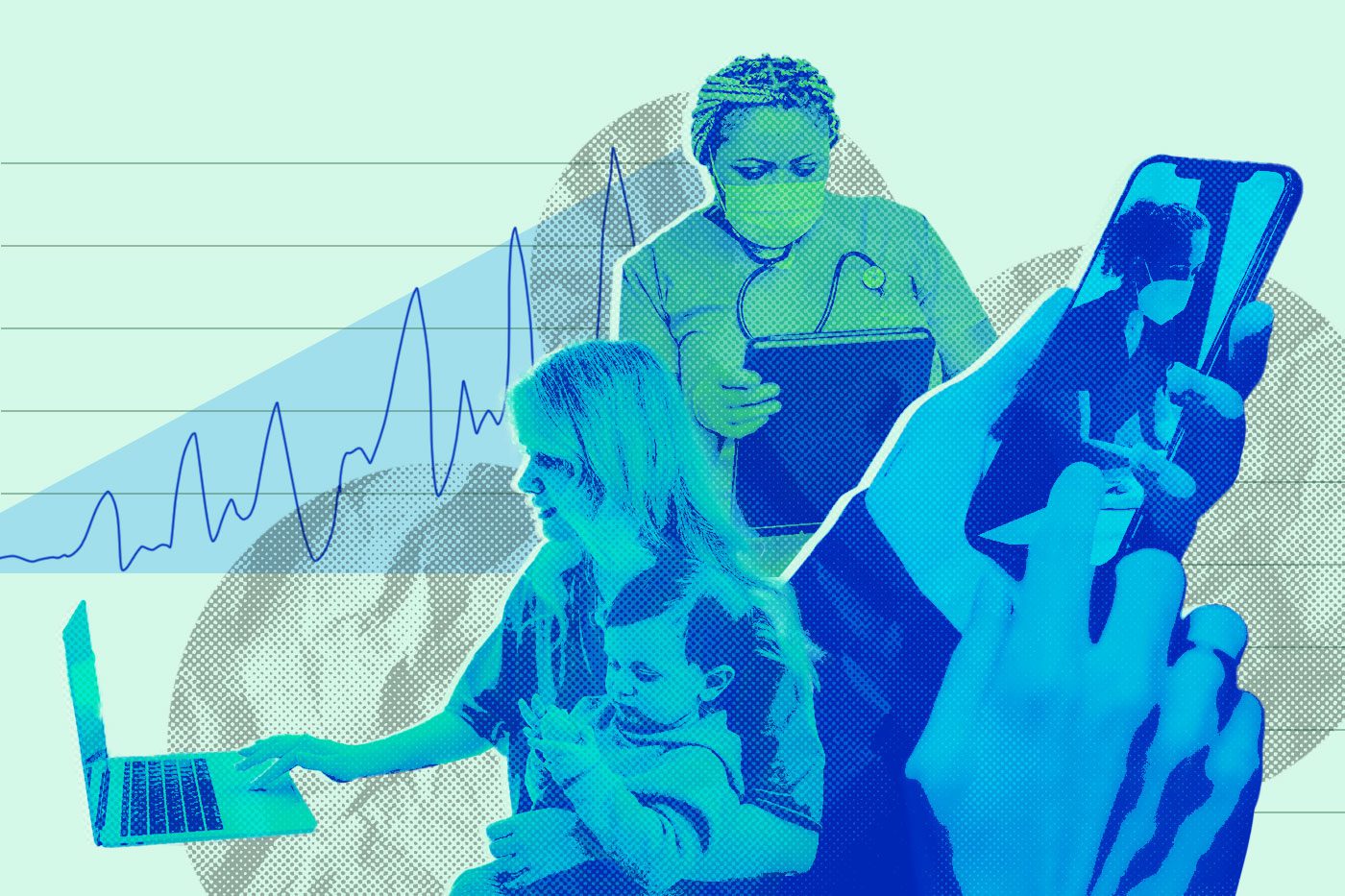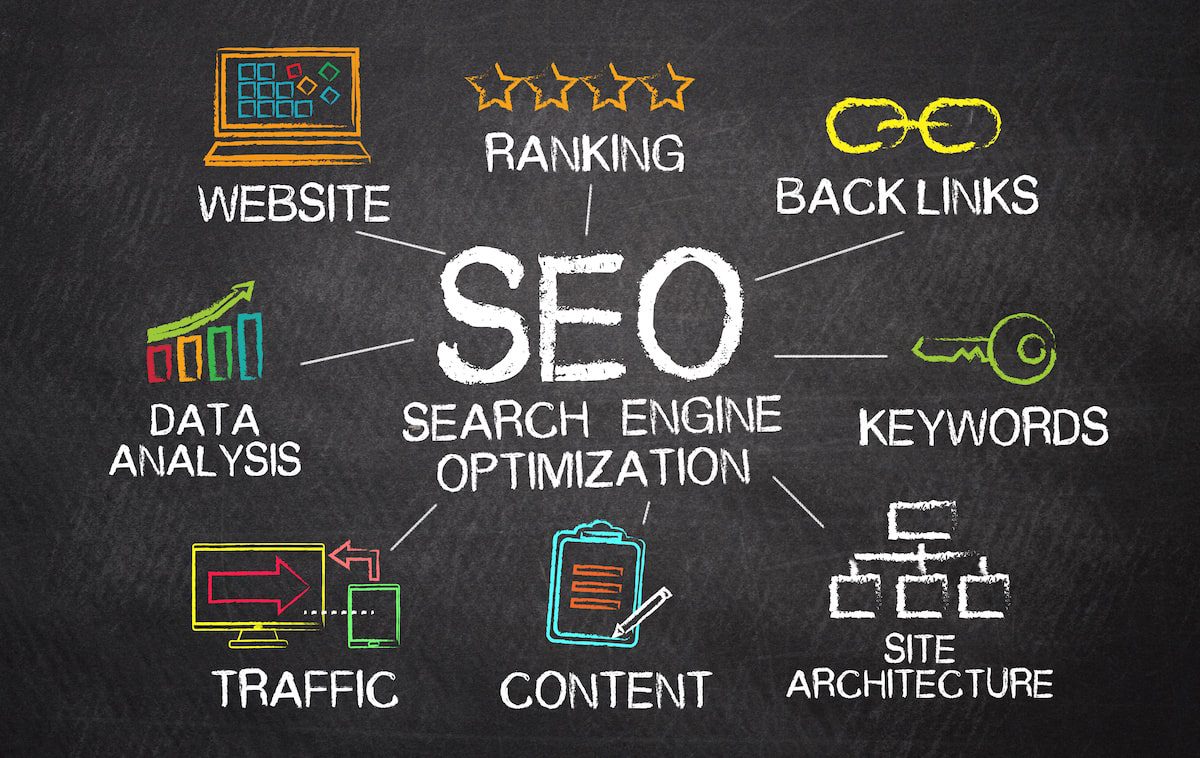Top Healthcare Digital Marketing Trends in 2025
- 1. Technical SEO is Still Vital for Medical Content
- 2. Grow Digital Health Communities
- 3. Stand By Privacy-First Precision Healthcare Marketing
- 4. Adopt Healthcare Workforce Solutions
- 5. Adapting Video Marketing to Healthcare
- 6. Incorporate Omnichannel Patient Communication
- Tips for Leveraging These Trends
- Work With a Team That Gets Healthcare Marketing
- Healthcare Digital Marketing FAQs
- What is digital healthcare marketing?
- What are the 5 Ps of healthcare marketing?Â
- Why is healthcare digital marketing necessary?
- How does healthcare marketing work?
- How can social media be used effectively in healthcare digital marketing? Â
- What other marketing options are there apart from SEO and PPC?Â
- How to create a digital marketing strategy for healthcare? Â
- How can digital marketing improve patient engagement in healthcare? Â
- How can healthcare providers measure the success of their digital marketing efforts? Â
The healthcare marketing terrain is constantly evolving. Despite changing trends and the impact of generative AI, it’s still possible to make some predictions about its future.
Join us as we discuss what we expect from healthcare marketing in 2025 and why we think these will be the top trends to watch.

1. Technical SEO is Still Vital for Medical Content
Search engine optimization (SEO) is no longer just a nice-to-have—it’s a must for medical practices aiming to rank highly and build trust with potential patients online. Medical websites face unique challenges regarding SEO due to the sensitive nature of the content and regulations. However, strong technical SEO is crucial for ensuring your website is accessible, trustworthy, and ranks well in search results.
Crawlability and Indexing
- Structured Data: Use schema markup to provide clear information about your practice, staff, services, and conditions treated. This helps search engines understand your content and display it accurately in rich snippets.
- XML Sitemap: Submit an updated XML sitemap to major search engines like Google and Bing. This helps them discover and index your pages efficiently.
- Robots.txt: Ensure your robots.txt file doesn’t block search engine crawlers from accessing essential pages.
- Mobile-Friendliness: Make sure your website is mobile-responsive and offers a seamless experience across all devices. Google prioritizes mobile-friendly sites in search results.
Website Speed and Performance
- Page Speed Optimization: Minimize page load times by optimizing images, compressing files, and using a caching plugin. Faster loading pages improve user experience and SEO rankings.
- Server Response Time: Choose a reliable hosting provider with fast server response times. Slow servers can significantly impact your website’s performance and crawlability.
- Technical Audits: Conduct technical audits regularly, using tools like Google Search Console and Screaming Frog, to identify and fix any technical issues affecting your website.
Content Creation
- Voice Search Optimization: Optimize content for long-tail, conversational queries as more users search for health-related information via voice assistants like Alexa and Google Assistant.
- E-E-A-T Compliance (Experience, Expertise, Authoritativeness, Trustworthiness): Continue creating medically accurate, user-friendly, and authoritative content that boosts your search engine rankings while building trust with healthcare consumers.
Remember, medical SEO is complex. Consider hiring an SEO specialist to maximize your technical SEO strategy.
2. Grow Digital Health Communities
Social media is a powerful tool for uniting healthcare consumers and providers. Building digital health communities can improve outreach, engagement, and brand awareness.
- Patient Support Groups: Create online spaces for individuals to connect and share experiences about health conditions.
- Professional Healthcare Networks: Foster collaboration and knowledge sharing among healthcare professionals.
- Condition-Specific Online Communities: Cater to niche audiences and deliver highly targeted content marketing strategies.
- Healthcare Influencer Partnerships: Amplify your reach by collaborating with trusted voices in the healthcare industry on social media platforms like LinkedIn and Instagram.
*Pro Tip: Review community metrics regularly to gauge engagement and identify areas for improvement in your outreach initiatives.
3. Stand By Privacy-First Precision Healthcare Marketing
Data privacy is a top concern, especially in healthcare. Marketing campaigns must balance personalization with compliance, ensuring patient information remains secure.
While healthcare providers are interested in understanding web visitor behavior, Google Analytics 4 (GA4) and many other analytics tools are not HIPAA compliant.
However, this limitation doesn’t mean healthcare organizations can never benefit from analytics. GA4 and other analytics tools can help you avoid HIPAA issues. Workarounds include masking specific URLs (for instance, URLs with a name that could indicate a user’s medical condition) and masking IP addresses. Here are some of our recommendations:
- Privacy-First Analytics Alternatives: Adopt tools that comply with HIPAA and prioritize patient data privacy. To stay compliant without workarounds, consider using an analytics tool designed for HIPAA compliance, such as Heap, Snowplow, or Rudderstack.
- First-Party and Zero-Party Data Strategies: Shift to data collection methods that rely on transparent and consent-based practices.
- Compliance with International Regulations: Stay updated on global data privacy laws to avoid legal complications.
- Enhanced Targeting Without Breaching Privacy: Contextual advertising and anonymized metrics can reach specific patient demographics and internet users effectively.
Navigating HIPAA compliance and web analytics can be extremely challenging, but healthcare organizations can greatly benefit from analytics tools.
4. Adopt Healthcare Workforce Solutions
With a growing emphasis on employee well-being and engagement, healthcare organizations are streamlining workforce solutions via digital platforms. With staff shortages still a worldwide issue, many organizations prioritize staff recruitment in their marketing plans.
Components of workforce solutions include:
- Digital Employee Experience: Implement modern tools that simplify workflow and improve employee satisfaction.
- Remote Healthcare Workforce Management: Use platforms to manage remote teams effectively, enabling telehealth and virtual collaboration.
- Virtual Training and Development: Provide accessible, high-quality training programs for continuous skill development.
- Content Marketing for Lead Generation: Building up career websites with informative and well-designed content, particularly in areas with shortages of qualified staff, can be a boon for talent recruitment. See this example from our client, Brooks Rehabilitation.
- Employee Advocacy Programs: Encourage employees to act as brand ambassadors, sharing patient care stories and increasing your organization’s visibility on social media.
These initiatives enhance retention and boost your brand’s reputation as an employer of choice.
5. Adapting Video Marketing to Healthcare
Video continues to dominate digital platforms, and healthcare marketing is no exception. From patient education to live Q&A sessions, video content enhances engagement and improves the patient experience.
Fortunately, healthcare providers have multiple areas to draw from to create compelling video content. Impactful patient testimonials and stories, employee experiences, and facility tours are just a few ways healthcare providers can leverage video content marketing tactics to connect with new and existing patients.
Trends in video marketing include:
- Short-Form Medical Education Content: Create bite-sized videos that simplify complex topics, from wellness tips to treatment overviews. Staff introductions on these videos will help patients and potential new talent get to know the people behind your organization.
- Live Streaming for Health Education: To build trust and answer potential patients’ questions, host live Q&A sessions or educational webinars. If your organization has staff with specialized expertise and research areas, consider having a physician or other specialist create explainer videos to demystify medical conditions, procedures, and treatment options. You could also leverage staff expertise with Q&A sessions that address common concerns, offer wellness tips, and provide other expert insights.
- AR/VR Patient Education: Use augmented and virtual reality to create interactive experiences that better explain medical procedures and conditions.
- Telemedicine Marketing Integration: Promote telemedicine services through video tours and consultations, showcasing convenience and accessibility.
*Pro Tip: Optimize your videos with SEO strategies like adding closed captions, embedding keywords, and ensuring mobile compatibility to improve rankings and reach.
To make video content marketing most effective, cater your content to your specific audience, maintain high production quality, and optimize videos for search engines. By focusing on patient education, trust building, and improved experience, you can leverage video to deliver better care to your communities.
6. Incorporate Omnichannel Patient Communication
Patients now expect seamless communication across all digital channels. An AI-driven patient experience strategy ensures that healthcare organizations meet these expectations.
- Secure Messaging Platforms: Provide encrypted communication to prioritize patient privacy.
- Mobile Health Apps: Offer personalized patient care through user-friendly apps.
- Predictive Analytics: Leverage AI to anticipate patient needs based on behavior and history.
- Automated Follow-Up Systems: Improve retention by automatically reminding patients of appointments, tests, or medications.
- Personalized Health Content Recommendations: Deliver relevant content via email marketing campaigns or patient portals. Send targeted, personalized email campaigns to patients with educational content, appointment reminders, promotional offers, and more.
*Pro Tip: Use AI tools to fine-tune your healthcare digital marketing strategy by analyzing data from multiple touchpoints to provide a cohesive patient experience.
If you’re not sold on the potential of generating appointments (and revenue) via email, check out this Big Sea case study—we helped one of our healthcare clients generate over $6,000 with a single email newsletter.
Tips for Leveraging These Trends
- Utilize Data Analytics: Identify patient demographics and tailor marketing efforts accordingly.
- Invest in AI: Leverage predictive analytics to anticipate trends and patient needs.
- Stay HIPAA-Compliant: Ensure data privacy is prioritized by marketing campaigns, tracking, and patient communication tools.
- Focus on User Experience: Make your digital platforms user-friendly and accessible across all mobile devices.
- Engage on Social Media: Build trust by interacting with healthcare consumers on digital channels.
Work With a Team That Gets Healthcare Marketing
The rise of AI, privacy regulations, and patient-centered approaches redefines healthcare marketing. A shift toward innovation, trust-building, and compliance is essential for healthcare organizations to thrive. Adopting the above trends, healthcare practices can enhance their digital presence and better serve their patients.
Need help implementing an effective digital marketing strategy? Contact Big Sea, a digital marketing agency specializing in the healthcare industry, to take your marketing campaigns to the next level!
Healthcare Digital Marketing FAQs
What is digital healthcare marketing?
Digital healthcare marketing uses online channels and strategies to connect with and engage existing or potential patients. It can include various tactics, such as creating informative and compelling website content, targeted social media advertising, and managing online scheduling and patient communications.
One of the primary objectives of digital healthcare marketing is to attract new patients by increasing web traffic and enhancing search engine rankings. This is why an effective SEO strategy is key for digital healthcare marketing today.
Another key goal of digital healthcare marketing is improving the experience of current patients. Today, patients want to access health information and schedule appointments online. Building a user-friendly and effective online presence allows healthcare providers to retain patients by positively impacting their online patient experience.
What are the 5 Ps of healthcare marketing?
Building on the traditional 4 P’s (Product, Price, Place, Promotion), healthcare marketing incorporates a fifth P, “Patients.” Here’s how they align with medical services:
- Product: The healthcare services and solutions provided (e.g., telemedicine or specialty care)
- Price: Affordability of services and pricing strategy
- Place: How and where patients can access services, whether in-person or digitally
- Promotion: Advertising and content strategies to attract patients
- Patients: The focus on patient needs, experiences, and satisfaction in all marketing efforts
Why is healthcare digital marketing necessary?
Healthcare marketing enables providers to meet patients where they are most active—online. Here’s why it’s essential:
- Improves Patient Engagement: Platforms like patient portals and personalized email campaigns enhance confidence in medical brands.
- Drives Awareness: Strategic marketing boosts visibility for new services and facilities.
- Promotes Trust and Education: Offering high-quality, accurate medical content builds credibility and positions your healthcare brand as a reliable resource.
How does healthcare marketing work?
Like any other marketing strategy, healthcare marketing involves understanding your target audience, crafting a compelling message, and choosing the channels to reach them.
However, due to its sensitive nature and the regulations involved, healthcare has some unique aspects. Healthcare providers must ensure that their web presence and other marketing channels are always compliant with HIPAA and other relevant privacy and data security regulations.
How can social media be used effectively in healthcare digital marketing?
Social media marketing is perfect for building patient engagement, sharing health information, promoting wellness initiatives, and enhancing outreach. Use them strategically to build trust, improve your online reputation, and provide personalized care.
What other marketing options are there apart from SEO and PPC?
Apart from SEO and pay-per-click (PPC), there are several effective digital marketing strategies you can explore. Content marketing is a powerful option that involves creating high-quality, valuable content, such as blogs, videos, or infographics, to engage your audience and establish your expertise. Email marketing is another avenue allowing you to connect with patients through targeted, personalized communication. Social media marketing is ideal for building relationships, sharing updates, and fostering a sense of community. Additionally, leveraging reputation management strategies, such as encouraging online reviews and responding to feedback, can enhance your credibility. These tactics complement your overall plan and help you reach your goals effectively.
How to create a digital marketing strategy for healthcare?
A successful digital marketing strategy for healthcare should consider these steps:
- Define your objectives (e.g., grow website traffic, boost patient engagement).
- Identify your target audience and their behavior online.
- Perform keyword research relevant to your medical services and location.
- Utilize multi-channel marketing, combining SEO, SMS, email, and social media.
- Monitor performance using analytics tools to assess campaign effectiveness.
- Adjust strategies based on metrics and patient feedback for continuous improvement.
How can digital marketing improve patient engagement in healthcare?
Digital marketing provides tools to connect with patients on a deeper level, such as:
- Real-time communication through SMS or chatbots.
- Personalized content like health tips based on demographics or history.
- Automated follow-ups, reminders, and wellness encouragement via email campaigns.
- Interactive content such as live webinars, Q&A sessions, or health trackers.
This keeps patients informed and fosters a feeling of being cared for, improving retention and loyalty.
How can healthcare providers measure the success of their digital marketing efforts?
Success should be evaluated using data-driven metrics, including:
- Website Traffic: Track the number of visits, time spent, and bounce rates on your website.
- Lead Conversion Rates: Measure the percentage of visitors who take actionable steps, such as scheduling a consultation.
- Engagement Metrics: Evaluate likes, shares, and comments on your social media platforms.
- ROI Tracking: Evaluate the return on investment (ROI) for campaigns, including cost-per-click (CPC) for ads and revenue generated.
Utilizing analytics tools that comply with healthcare standards, such as HIPAA, ensures accurate monitoring while maintaining patient privacy.



